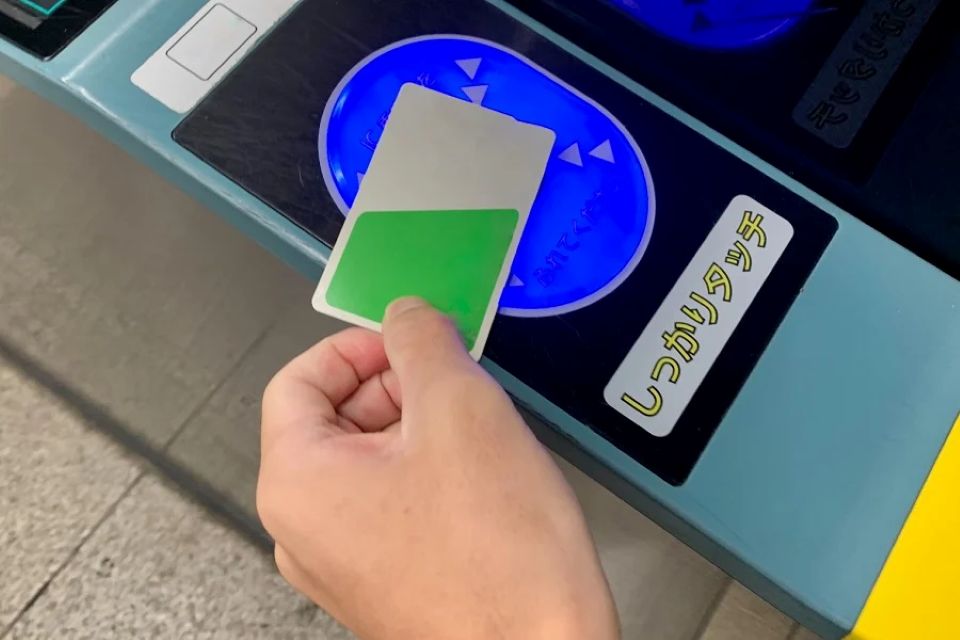🚆 Transportation in Japan(交通機関の使い方)
Learn how to use trains, subways, buses, and more with confidence during your trip.
Japan's Public Transport System
Japan boasts one of the most efficient and reliable public transportation networks in the world. Trains, subways, buses, and trams are all punctual, clean, and well-connected, making it easy to travel anywhere—from bustling cities to remote countryside.
Major cities like Tokyo, Osaka, and Kyoto have extensive rail and metro systems, while rural areas are served by regional trains and buses. Suica and IC cards make it convenient to hop on and off across different modes of transport.
Whether you’re a first-time visitor or a seasoned traveler, understanding Japan’s transport system will enhance your journey and save valuable time.
🚄 Types of Trains in Japan
From high-speed bullet trains to charming local lines, Japan offers a wide range of train types to match every travel style and destination.
Shinkansen (Bullet Trains)
Japan’s fastest and most famous trains. They connect major cities with incredible speed and comfort—ideal for long-distance travelers.
Limited Express Trains
These trains stop only at key stations and are perfect for intercity trips. Most require a seat reservation and an extra fare.
Rapid & Local Trains
Found in cities and suburbs, rapid trains skip smaller stations, while local trains stop at all. Affordable and widely used by commuters.
Scenic & Tourist Trains
These themed trains offer regional charm, with traditional interiors, panoramic views, or seasonal experiences worth the ride.
Knowing the types of trains helps you choose the right route, travel efficiently, and experience more of Japan along the way.
Mastering Japan's Transportation System
Japan’s public transportation is renowned worldwide for its punctuality, efficiency, and cleanliness. From bustling city metros to scenic countryside trains, it offers a seamless way to explore the country.
However, for first-time visitors, the array of options and unfamiliar systems can be a bit overwhelming. This guide will walk you through everything you need to know to travel with confidence and ease.
Overview of Public Transportation
- Ticketing Options: Single tickets, IC cards (like Suica, PASMO, ICOCA)
- Types of Transport: JR trains, subways, private railways, buses, trams
- Regional Differences: Tokyo’s dense metro vs Kansai’s private rail networks
Japan’s transport network is well-integrated, with easy connections between train, subway, and bus systems. Most signage includes English translations, making navigation more accessible.
🚄 Types of Trains in Japan
From high-speed bullet trains to charming local lines, Japan offers a wide range of train types to match every travel style and destination.
Shinkansen (Bullet Trains)
Japan’s fastest and most famous trains. They connect major cities with incredible speed and comfort—ideal for long-distance travelers.
Limited Express Trains
These trains stop only at key stations and are perfect for intercity trips. Most require a seat reservation and an extra fare.
Rapid & Local Trains
Found in cities and suburbs, rapid trains skip smaller stations, while local trains stop at all. Affordable and widely used by commuters.
Scenic & Tourist Trains
These themed trains offer regional charm, with traditional interiors, panoramic views, or seasonal experiences worth the ride.
Knowing the types of trains helps you choose the right route, travel efficiently, and experience more of Japan along the way.
💳 How to Use IC Cards
IC cards like Suica, PASMO, ICOCA, and others are rechargeable smart cards used across Japan’s public transportation systems.
- Where to Get One: Purchase from machines or counters at major train stations.
- How to Use: Simply tap the card at ticket gates to enter and exit. No need to buy individual tickets.
- Recharge: Add money at vending machines, kiosks, or convenience stores.
- Other Uses: Can also be used for vending machines, convenience stores, and lockers.
Using IC cards saves time and simplifies travel. It’s a must-have for tourists and locals alike.

🚌 How to Use Buses in Japan
Taking a bus in Japan can be a convenient and scenic way to get around, especially in areas without train access. While buses are less standardized than trains, here are the basics you need to know:
- Getting On: In most cities, board from the front door. In rural areas, enter through the rear and take a numbered ticket (if no IC card).
- Paying: Use an IC card or pay in cash (exact change). Fares are either flat-rate or distance-based.
- Getting Off: Press the stop button before your destination. Exit from the front and pay upon leaving.
- Displays: Monitor onboard screens for upcoming stops. Major cities often display stops in English.
Bus systems can differ by region, so don’t hesitate to ask the driver or check route maps in advance. Many buses are punctual and clean, just like trains.
🚇 Navigating the Subway
Japan’s subway systems—especially in cities like Tokyo and Osaka—can seem overwhelming, but they’re clean, efficient, and surprisingly easy to use once you know the basics.
Subways are fast, punctual, and avoid street-level traffic. Once you get the hang of it, you’ll be navigating like a local!
🧳 Tips for Travelers
Here are some practical tips to help you move around Japan with ease and confidence:
🕒 Travel Off-Peak
Avoid rush hours (7–9 AM, 5–7 PM) to enjoy a more relaxed commute—especially in major cities like Tokyo or Osaka.
📱 Use Transit Apps
Apps like Google Maps or Japan Transit Planner help plan routes, check schedules, and estimate fares.
💬 Know a Few Phrases
Simple phrases like “Sumimasen” (Excuse me) or “Doko desu ka?” (Where is...?) can go a long way.
🧾 Keep Change Handy
Some local buses and trains may not accept large bills—carry coins and small notes just in case.
By following these tips, you’ll navigate Japan’s transport system like a pro—stress-free and with more time to enjoy your trip.
🗺️ Ready to Explore Japan?
Whether you're hopping on a bullet train or catching a scenic bus through the countryside, Japan's public transport is built for comfort, efficiency, and adventure. With the right tips and tools, you’re ready to travel like a local—confidently and stress-free.
